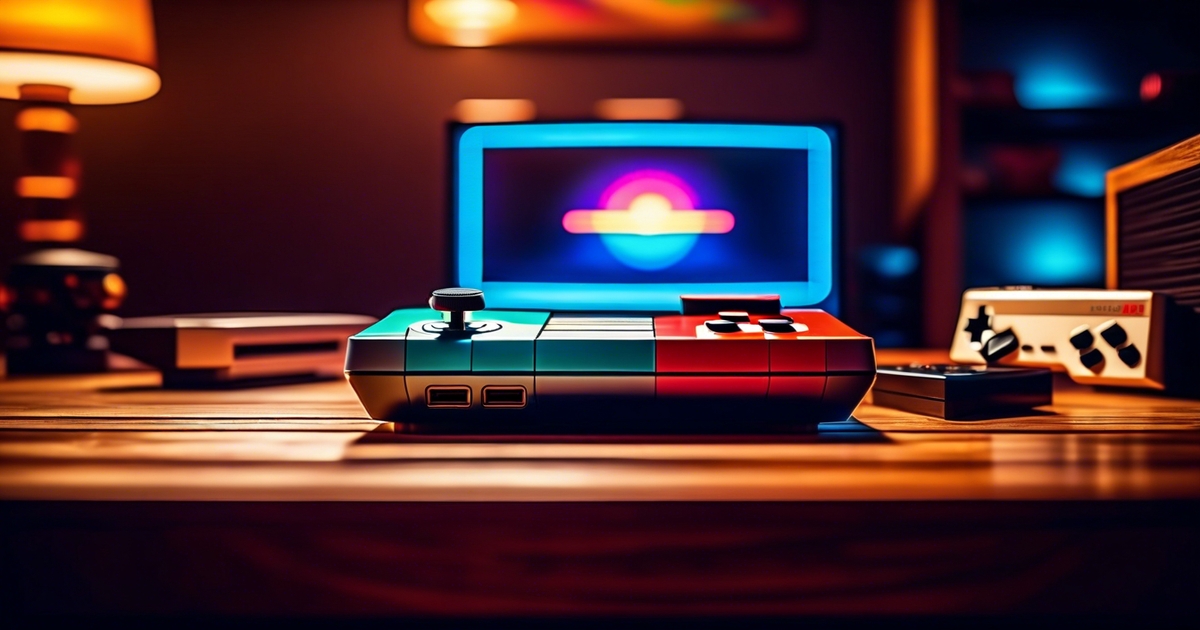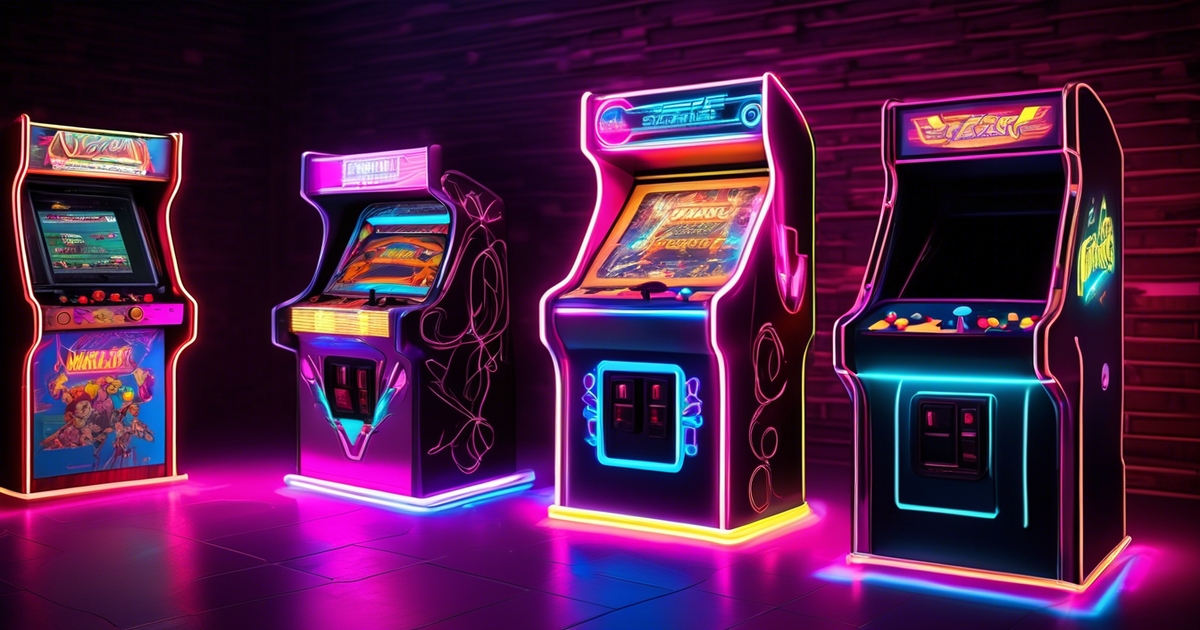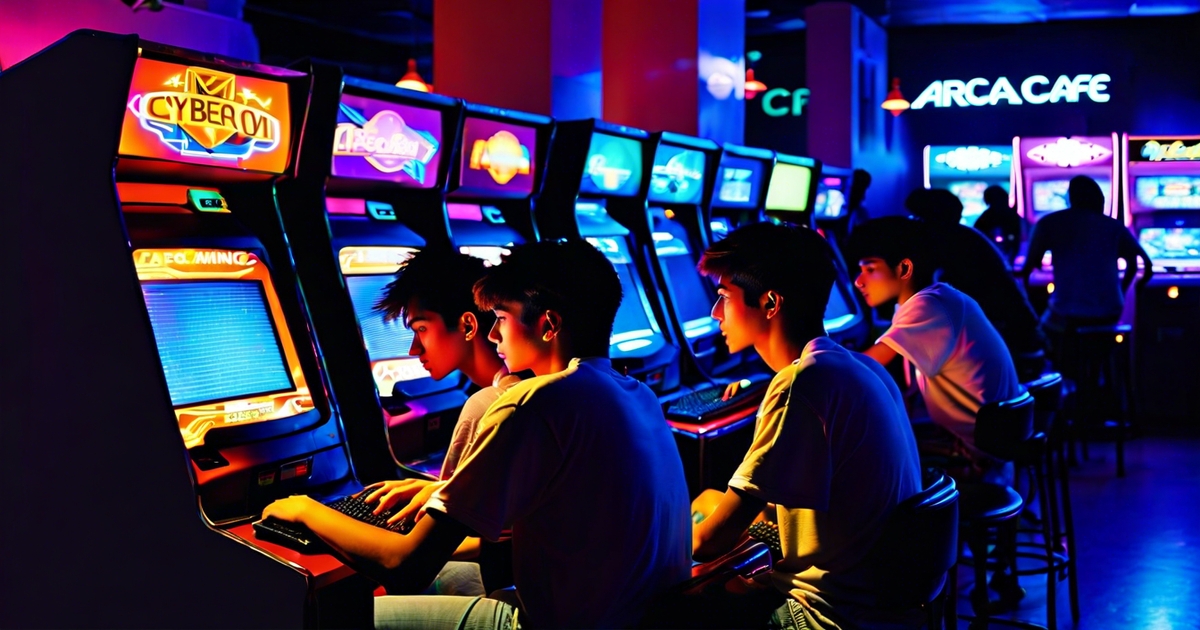10 Reasons Why Gaming Was Simply Unbeatable in the 90s

- 1. The Birth of Iconic Franchises
- 2. The Rise of Handheld Gaming
- 3. Local Multiplayer Gaming
- 4. Blockbuster Video Game Rentals
- 5. Physical Game Copies and Manuals
- 6. The Emergence of 3D Graphics
- 7. Gaming Magazines and Cheat Codes
- 8. The Golden Age of Arcades
- 9. Diverse Game Genres and Experimentation
- 10. The Sense of Community and Nostalgia
- Summary
- Frequently Asked Questions
Nostalgia hits hard when we dive into why gaming was better in the 90s. This era wasn’t just about simpler times; it was about groundbreaking games that set the stage for the evolution of gaming and today’s masterpieces.
Back then, creativity soared with limited technology, pushing developers to think outside the box. The result? Iconic titles and a sense of community that modern gaming struggles to replicate.
From pixelated adventures to immersive storylines, the 90s delivered unforgettable experiences that shaped an entire generation of gamers.
If you’re itching to revisit these classics or curious about what made this decade legendary in the gaming world, continue reading.
1. The Birth of Iconic Franchises
The ’90s witnessed the introduction of franchises that would become pillars in the world of gaming. Series like Mario, Zelda, and Sonic didn’t just entertain; they set a new standard for what video games could be.
These franchises laid the foundation for modern gaming narratives and characters. It was during this era that gamers first met characters who would become almost household names. Think about it – Mario leaping across platforms, Link embarking on epic quests in Hyrule, or Sonic speeding through loops to stop Dr. Robotnik.
What made these series stand out wasn’t just their memorable characters but also their pioneering gameplay mechanics. These games introduced concepts such as open-world exploration, platforming challenges, and speed-based gameplay that are still influential today.
Beyond entertainment, these franchises sparked fandoms that continue to thrive decades later. They’ve inspired countless sequels, spin-offs, movies, merchandise, and even theme park attractions.
2. The Rise of Handheld Gaming
The 90s saw a groundbreaking moment in gaming history with the launch of Nintendo’s Game Boy. This device wasn’t just another gadget; it revolutionized how and where we played games, making gaming truly portable for the first time. Before smartphones and tablets, the Game Boy was our go-to entertainment on long car rides or while waiting at the dentist’s office.
What made Game Boy particularly special was its diverse game library. Gamers had access to a wide range of titles, from action-packed adventures to puzzle-solving classics. This variety ensured that there was something for everyone, encouraging more people to embrace gaming on-the-go.
But perhaps no game series contributed more to handheld gaming’s explosion in popularity than Pokémon. Introduced in the late 90s, Pokémon quickly became a global phenomenon. It wasn’t just about playing a game; catching all those Pokémon became an obsession that transcended age groups and brought players together from around the world.
3. Local Multiplayer Gaming
Couch co-op and competitive play weren’t just fun; they were the glue of many friendships. Picture this: a room full of friends, controllers in hand, eyes glued to the screen. This was gaming in its purest form during the ’90s. It wasn’t about playing against an anonymous gamer online but rather side-by-side with your buddy, strategizing or competing in real time.
Split-screen experiences defined how we interacted socially through games. The thrill of racing against each other on the same screen or teaming up to tackle challenges together made gaming a shared adventure. These moments created memories that lasted far beyond the gameplay itself.
Then there were LAN parties – large-scale, in-person multiplayer events that became legendary among gamers. Hauling PCs or consoles to a friend’s house for overnight gaming marathons turned into a rite of passage. It wasn’t just about the games; it was about community building, sharing tips and tricks face-to-face, and enjoying snacks while troubleshooting network issues together.
4. Blockbuster Video Game Rentals
Back in the 90s, gamers experienced a unique culture of game exploration thanks to Blockbuster’s video game rentals. This service provided accessibility to a wide range of games without the need for purchase, allowing players to try before they buy or simply enjoy a title for a weekend.
The weekend rental culture was something special. It encouraged gamers to explore new genres and titles they might not have otherwise considered. Every Friday night, kids and adults alike would flock to their local Blockbuster, browsing through aisles of games, picking out what could be their next favorite.
This system had an undeniable influence on game popularity and sales. Games that were popular rentals often saw spikes in purchases as word-of-mouth spread about how fun or engaging they were. In essence, Blockbuster acted as an early form of social proof for video games; if it was constantly out of stock at your local store, it must be good.
Moreover, this rental culture allowed players who couldn’t afford every new release the chance to stay up-to-date with current gaming trends and participate in conversations around them. It created communal experiences where friends would share recommendations or swap games after renting them.
5. Physical Game Copies and Manuals
Back in the 90s, owning a game felt like holding a treasure. Each physical copy came with box art that was often as captivating as the game itself. This tangible ownership provided gamers not just with a disk or cartridge but an artwork to display.
The detailed manuals within these boxes were nothing short of magical. They didn’t just offer instructions; they immersed you into the game’s world before you even powered on your console or PC. These manuals contained lore, character backstories, and tips that enhanced understanding and engagement.
Collectibility played a huge role too. Completing sets of games from beloved series became a passionate hobby for many. The nostalgia value attached to these collections is immeasurable today. Each box on the shelf tells its own story, evoking memories of battles fought and worlds explored.
Moreover, physical copies helped combat piracy issues by offering something digital downloads couldn’t – copyright protection embedded in something tangible and collectible.
6. The Emergence of 3D Graphics
The leap from 2D to 3D graphics was nothing short of revolutionary in the ’90s. This transition wasn’t just about adding another dimension; it fundamentally changed how games were played and experienced. For the first time, gamers could explore virtual worlds with depth, making gameplay more immersive and realistic.
Super Mario 64 is a prime example of this shift. Released in 1996 for the Nintendo 64, it set a new standard for what video games could be. Players weren’t just moving left or right anymore; they were exploring every nook and cranny of Princess Peach’s castle in three dimensions. Super Mario 64 didn’t just use 3D graphics as a gimmick—it integrated them into its core gameplay mechanics, proving that this new technology could enhance how we interact with games.
This enhanced realism had a profound impact on immersion. Gamers weren’t simply playing a game; they were entering another world—a world where you could run around in all directions, jump across vast chasms, and view your surroundings from any angle. It made these digital realms feel alive and more tangible than ever before.
7. Gaming Magazines and Cheat Codes
Back in the ’90s, gaming magazines were more than just paper; they were a lifeline to the gaming world. Players relied on these publications for the latest news, in-depth reviews, and, most importantly, cheat codes that could make or break their gameplay experience.
Imagine eagerly waiting for the monthly issue of your favorite magazine to hit the shelves. Flipping through its pages was like discovering treasure — exclusive interviews, sneak peeks at upcoming games, and those precious cheat codes neatly tucked away in a corner.
Sharing cheat codes wasn’t just about gaining an edge in gameplay; it fostered a sense of community among gamers. Schoolyards and online forums buzzed with discussions about new finds from magazines. This sharing culture turned strangers into comrades-in-arms, battling through levels together with shared secrets.
Moreover, print media played a pivotal role in shaping game discovery and fandom culture. Before internet algorithms suggested what you might like next, it was these magazines that introduced gamers to new worlds awaiting them beyond their current library.
8. The Golden Age of Arcades

Arcades, during the 90s, were more than just places to play video games. They served as vibrant social hubs where gamers of all ages gathered. It wasn’t just about playing alone; it was about being part of a community.
This era also saw the rise of competitive gaming in arcades. Players would crowd around machines, challenging each other for high scores and bragging rights. This competitive scene laid the groundwork for what we now know as esports, turning video game competitions into a global phenomenon.
What made arcades truly special were the experiences they offered that couldn’t be replicated at home. From dance rhythm games like “Dance Dance Revolution” to racing simulators with actual car seats and steering wheels, arcades provided unique physical interactions with games. These experiences required large, specialized equipment that most people couldn’t afford or didn’t have space for in their homes.
9. Diverse Game Genres and Experimentation

The ’90s witnessed a surge in genre variety, from role-playing games (RPGs) to survival horror. This era was a playground for creativity, where developers dared to experiment, leading to the birth of innovative classics that have stood the test of time.
One notable aspect was the experimental gameplay that emerged during this period. Developers were not afraid to mix genres or introduce new mechanics, which resulted in games like “Resident Evil” blending survival horror with puzzle-solving and action elements. Similarly, “Final Fantasy VII” revolutionized RPGs by incorporating cinematic storytelling and real-time battles.
Indie developers also began to make their mark in the ’90s. Freed from the constraints of major publishers, these smaller teams brought fresh perspectives and unique titles to the gaming world. Games like “Cave Story” and “Braid,” though released after the ’90s, owe much of their inspiration to the indie spirit that started during this decade.
This diversity and willingness to experiment made gaming more accessible and appealing to a wider audience. Players could find something that resonated with them personally, whether they preferred strategy-heavy RPGs or fast-paced platformers.
10. The Sense of Community and Nostalgia
In the ’90s, gaming wasn’t just about playing; it was about connecting. Early internet forums became the hub for gamers worldwide, fostering communities based on shared interests in specific games or genres. These platforms allowed players to exchange tips, share experiences, and form friendships that often lasted beyond the screen.
Retro gaming communities have played a crucial role in keeping classic games alive. Through these passionate groups, old-school games continue to thrive, thanks to fan-made mods, guides, and discussions that breathe new life into them. It’s not just about preservation but also celebration – these communities organize events and competitions that keep the fun of ’90s gaming going strong.
Nostalgia is a powerful force driving the resurgence of ’90s game merchandise. From t-shirts featuring iconic game characters to limited edition consoles reminiscent of bygone eras, there’s a growing market catering to those looking to recapture their youth’s magic moments through gaming memorabilia.
These elements combine to create an enduring sense of community and nostalgia around ’90s gaming that newer generations struggle to replicate. It’s not just about individual titles but the collective experience they offered—connecting people across distances before social media made it commonplace.
Summary
You’ve journeyed through the golden era of gaming, from the birth of iconic franchises that still resonate with us, to the tactile joy of flipping through a physical game manual. The ’90s weren’t just about the games themselves but the whole experience—huddling around a console for local multiplayer mayhem, dropping quarters into an arcade machine, or eagerly awaiting the latest gaming magazine for cheat codes. It was a time when gaming felt more like a shared adventure than a solitary pastime. This era fostered a sense of community and nostalgia that’s hard to replicate in today’s digital age.
So, dust off that old console, call over some friends for a retro game night, and relive the magic. Let’s not forget the roots of gaming culture that brought us together and continue to inspire creativity and camaraderie in the gaming world today. Game on!
Frequently Asked Questions
What made gaming in the 90s so special?
The 90s were a golden era for gaming, birthing iconic franchises and introducing handheld gaming. It was a time of local multiplayer fun, blockbuster rentals, and the thrill of physical game copies. The decade also saw the rise of 3D graphics and diverse genres, fostering a tight-knit community.
How did handheld gaming change in the 90s?
Handheld gaming took off in the 90s with devices like Game Boy. Gamers could now take their adventures on the go, making gaming more accessible and popular than ever before.
Why is local multiplayer remembered fondly from the 90s?
Local multiplayer meant friends crowded around one screen, sharing laughs and strategies. It created unforgettable memories of togetherness that many gamers miss today.
Are video game rentals still a thing?
While Blockbuster Video game rentals are largely a relic of the past due to digital downloads and streaming services, they’re fondly remembered for offering an affordable way to try out different games.
Do people still collect physical game copies?
Yes! Many gamers cherish physical copies for their tangible value—box art, manuals—that evoke nostalgia. Plus, they make great collectibles!
How did cheat codes impact gaming culture in the 90s?
Cheat codes added an extra layer of fun and mystery to games. Sharing these secrets became its own form of bonding among players, contributing significantly to gamer culture.
Why do some say arcades were better in the ’90s?
Arcades were social hubs where you’d challenge friends or team up against games together. They had an unbeatable atmosphere filled with excitement that’s hard to replicate at home.
